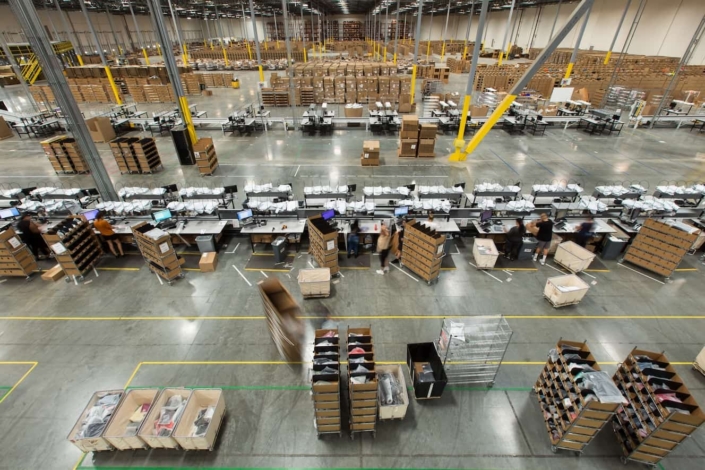Did you know that companies spend 58 cents of every dollar in revenue on payments to suppliers? With nearly 60% of revenue going to suppliers, it makes sense to strictly oversee their performance and hold them accountable. But the approach you take makes a big difference.
Many Japanese companies understand the importance of strong supplier relationships. They practice keiretsu, which Harvard Business Review defines as the creation of “close-knit networks of vendors that continuously learn, improve, and prosper along with their parent companies.”
Are your supplier relationships fostering learning, improvement, and prosperity? If not, don’t worry! It’s not too late to turn things around.
Jill Barron, practice lead for supply chain operations and strategy at Summit Advisory Team, has spent years of her career working with suppliers. Let’s dive into her tips for cultivating open, mutually beneficial supplier relationships.
Why is it important to build good relationships with suppliers?
Jill says, “If you’re a retailer or even a manufacturer, you set certain rules of engagement. And when your suppliers don’t follow those guidelines, it creates friction within your distribution center. It [takes] time to unravel problems, and time is money.”
Clearly, suppliers need to follow the guidelines you set. But what happens when they don’t? That’s when you have a choice to make.
When issues arise, many organizations are tempted to hit the supplier with penalties. However, that’s not a very productive reaction in the long term. When you communicate with partners and meet them halfway, you’ll often find that they’re willing to go the extra mile for you. The result? Lasting changes that benefit both parties.
How to create better supplier relationships
If you’ve been struggling with suppliers or vendors, it can be hard to rebuild those tense relationships. But with open communication, you can create a lasting foundation of collaboration.
Step 1: Choose which suppliers to focus on first
Many businesses have lots of suppliers—hundreds or even thousands. If you’re in that boat, how do you know where to start? Focusing on every single supplier isn’t a practical option. Instead, begin by choosing just a few to focus on; Jill suggests selecting your 10 or 20 most important partners.
Step 2: Evaluate their performance
Once you’ve chosen the suppliers you’ll focus on, review and evaluate their performance. Are they following your guidelines and meeting all the requirements? Have you had issues with them? How are they performing relative to your other suppliers?
Step 3: Set up regular conversations
After evaluating your suppliers’ performance on paper, you need to get a sense of their day-to-day operations. For that, you’ll need to meet regularly; try starting with monthly meetings, and then graduating to quarterly business reviews (QBRs).
“I need to stress,” Jill says, “have [these meetings] with your good partners as well as your poor-performing partners.” By taking a holistic approach to supplier relationships, you’ll keep things running smoothly even when unforeseen problems arise.
During these meetings, make sure to bring your version of the truth. Often, problems between businesses and suppliers stem from misunderstandings. If a supplier thinks they’re doing great but you aren’t satisfied, the partnership isn’t going well. Bring your data with you so you can clarify any misunderstandings around performance.
Relationship-building in action. Jill recounts an experience that illustrates the importance of getting on the same page. “We started a QBR [with a service provider], and we were talking about the time in transit to get products from Europe to the United States. And they came to the table saying, ‘We are meeting SLAs and expectations of service.’ And our report showed quite the opposite.”
“And it wasn’t meant to be adversarial. It wasn’t a ‘gotcha.’ But it enabled us to pull away the covers, and what we realized is our start point was different. How they were calculating turn time and the start and end date was different from how we were calculating turn time, the start and the end date. We walked away from that meeting aligning on what they should be, and the next meetings were much more productive because we were both talking the same language.”
Step 4: Visit the supplier’s facilities
In addition to holding regular meetings, make a habit of visiting suppliers’ facilities. This will allow you to see them in action and understand their processes. You might worry that suppliers will be reluctant to have you visit—and if you frame your visit as an investigation, they probably will be!
To help your partners feel comfortable having you around, make it clear that you’re not there to berate them or steal their trade secrets. Instead, communicate that you just want to sit down and figure out how to work better together.
Step 5: Remember that you don’t have to win every time
When building supplier relationships, you don’t have to be right every time. Making strategic concessions can help create a more comfortable, trusting relationship.
As Jill puts it, “Sometimes it’s okay to let the supplier win in the conversation. Even though you may feel at your heart that you are right or you don’t want to back down, that concession really starts to build trust. It will come back and benefit you in future days.”
Learn more about navigating supplier relationships
Hopefully, you have some great ideas for working with your suppliers more strategically. But one article can’t tell you everything you need to know. To continue learning, listen to Jill share her experiences and knowledge on Episode 8 of the Unboxing Logistics podcast.
Find the episode here, on YouTube, or on any major podcast platform (get links here).




